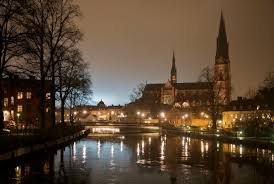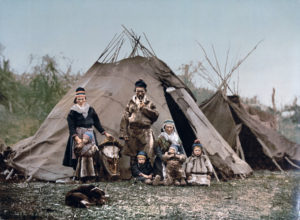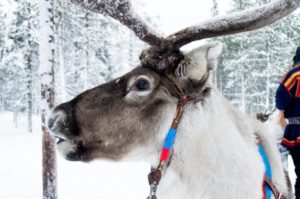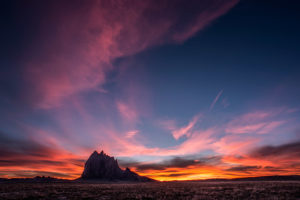My advice to anyone entering a conflict, either as a party or a conflict resolver, is to learn about the landscape — not just the geography, natural resources and climate, but also the cultural landscape. What values guide decisions? What are the economics, politics and history of the place?

And, so when I was invited to Uppsala to speak to graduate students studying environmental conflict resolution, I immediately turned my attention to the Swedish landscape. I began, of course, by binge-watching Swedish TV shows and movies. There is a wealth of nail-biting Swedish entertainment out there — “The Bridge,” “Johan Falk,” “Beck,” “Modus,” “Wallander” – all excellent.

We just finished the “Sandhamn Murders,” which I highly recommend. A troubled policeman with an ex-wife in the wings meets a gorgeous, bicycle-riding, flower-arranging, gourmet-cooking woman, mother of two supremely healthy children, who is unhappy in her marriage. As they flirt and misfire with each other, horrific murders are committed by the last person you would suspect. The setting is an island of summer homes owned by vacationers who wear very natty, color coordinated casual wear and poor locals who mostly repair boats and drink a lot of beer. All this screen time in the interest of understanding the Swedish “landscape” has been perfect for a non-academic, TV addict like myself. I admit that this style of immersion is like learning about the US Southwest by watching John Wayne movies and “Breaking Bad.” But I have come a long way from my previous “landscape of Sweden,” which was pretty much limited to pickled herring, Santa Lucia with candles on her head, winter sports and Northern Lights.

We watched a couple of things that we realized midway through were actually Norwegian or Danish. I caught myself thinking, well, that’s close enough, isn’t it? As if Texas were the same as New Mexico (heaven forbid!), or the US the same as Canada (sigh.) And just last night we went to the movies to see “Arctic.” It was foreign, the lead was named Mads Mikkelsen, and it was full of snow. Surely it was a Swedish film. It turned out to be Icelandic. And apologies to Mr. Mikkelsen who is a famous Danish actor.

Don’t get me wrong. It’s not all froth. We also saw a very interesting documentary about a Swedish woman who went on a journey above the Arctic Circle to learn about her Sami father, a traditional fisherman who became famous when he appeared on a Swedish postage stamp in the 1940s. The Sami used to be called Laplanders before they were able to assert their name in their own language, a story paralleled by many tribes in the US who have changed their names in recent decades. And I watched an anti-immigrant propaganda film decrying the loss of Swedish culture and values to the invasion of Middle Eastern immigrants, who, says the narrator, bring with them not only crime and drugs, but also disruptive attitudes and generally bad manners.

And I am proud to say that I am reading serious books: Scandinavians: In Search of the Soul of the North; Modern-day Vikings: A Practical Guide to Interacting with the Swedes; and Beneath the Ice: In Search of the Sami. Given my work with tribes, I am particularly interested in conflicts involving the Sami. Their experience as indigenous people and the challenges they face parallel our country’s history with natives. There are conflicts over development, power generation and mining in the iron-rich north where some Sami communities are committed to the  traditional Reindeer herding lifestyle and others are dependent on the income from the industry jobs. Environmentalists are fighting to protect the wolf in the arctic region and are meeting opposition from some Sami because the wolf preys on reindeer. The government is caught in the middle. Sound familiar?
traditional Reindeer herding lifestyle and others are dependent on the income from the industry jobs. Environmentalists are fighting to protect the wolf in the arctic region and are meeting opposition from some Sami because the wolf preys on reindeer. The government is caught in the middle. Sound familiar?
I’ve also learned that the Swedes are a people who respect privacy and can enjoy stretches of silence. They are sometimes shocked by enthusiastic, noisy, arm-waving Italian or American tourists. They have a reputation for being melancholy, glum and suicidal, but many Swedes would argue those are unfair stereotypes. Sure, Bergman films, Strindberg plays, and many of those series mentioned above are dark, but don’t define us by what is popular, they say, and point to a suicide rate that is about average for European countries. I am piecing together the Swedish landscape, bit by complicated bit.
In mid-March I will set foot in Sweden, ready to leave behind all my “research” and take it as it comes! And what will I say to the students in Uppsula? I will tell them that for me resolving conflict is all about building relationships and that the first step is understanding the landscape of the other. I will explain that I have made an effort to learn about Sweden and look to them to teach me more. I will offer them a picture of the geographic, cultural and historical landscape of New Mexico. And then we will exchange stories about our successes and failures in resolving conflicts, and the relationships will take root. It’s going to be a beautiful landscape that we create together.



Awesome! Great post. Enjoy the trip and can’t wait to hear more!
Thanks, Seth! Hope to see you sometime soon if you travel this way.
Dear Lucy, a joy to read this. My favorite line: ‘I will tell them that for me resolving conflict is about building relationships and thst the first step is understanding the landscape of the other.’ I want to hear more when you come back please.
Thank you, Nedra, for your encouragement. I confess to being more than a little nervous, not being the academic sort. But I figure everyone likes a gripping story, and I’ve got more than enough of those!
hi Lucy
I love the paired skies – aurora borealis and Shiprock sunset
one last addition to your prep- are you keeping apace with GRETA THUNBERG.
https://www.newyorker.com/news/our-columnists/the-fifteen-year-old-climate-activist-who-is-demanding-a-new-kind-of-politics
https://www.teenvogue.com/story/15-year-old-activist-greta-thunberg-schooled-world-leaders-climate-change-united-nations-summit
https://www.theguardian.com/science/2018/sep/01/swedish-15-year-old-cutting-class-to-fight-the-climate-crisis
bon voyage –
Wow, Susan! More prep for me. Many thanks.
Thank you Lucy. While this sounds daunting to me, for the same reasons you express, I’m sure you will have a positive impact. —- Reed
Thanks, Reed. I’m packing up all these encouragements and taking them along!
Lucy, you are a marvelous story teller and even more importantly for your soon to be students and friends, you have ‘conflict resolution’ in your muscle memory (which not all academics have) The opportunities for them to learn from your experience and you theirs is exciting. I remember appreciating your ability to give me a deeper understanding of the language that could be used and the importance of perspectives. Have a great time and thanks for the TV show recommendations.
Great to hear from you, Lori. You are such a pro — your message means a lot, and I love the concept of conflict resolution being in my muscle memory. You’re right. It’s almost reflexive at this point.
I have no doubt you will love Sweden and the Swedes. Such wonderful hospitality there!
Thanks, Charlene. I am really looking forward to it.
Hi Lucy,
Great newsletter, and I am looking forward to hearing about your trip to Sweden upon your return. I think you will be a wonderful ambassador from the USA. Your experiences with arbitration will make for good conversation with the Swedish people.
Have fun and take a lot of photos.
Jeff
Thanks, Jeff. Yes, my next blog will be chocked-full of photos!
Lucy, I’m looking forward to reading more upon your return from Sweden — so interesting about the Sami, the reindeer and wolves. As a former Wallander addict (Swedish version w/ subtitles) I appreciate your other video suggestions. Have a wonderful trip! Jan
Yes, Wallander is awesome, but try those others, too. We’re now watching “Arne Dahl” — no end of education to be found on Amazon Prime!!